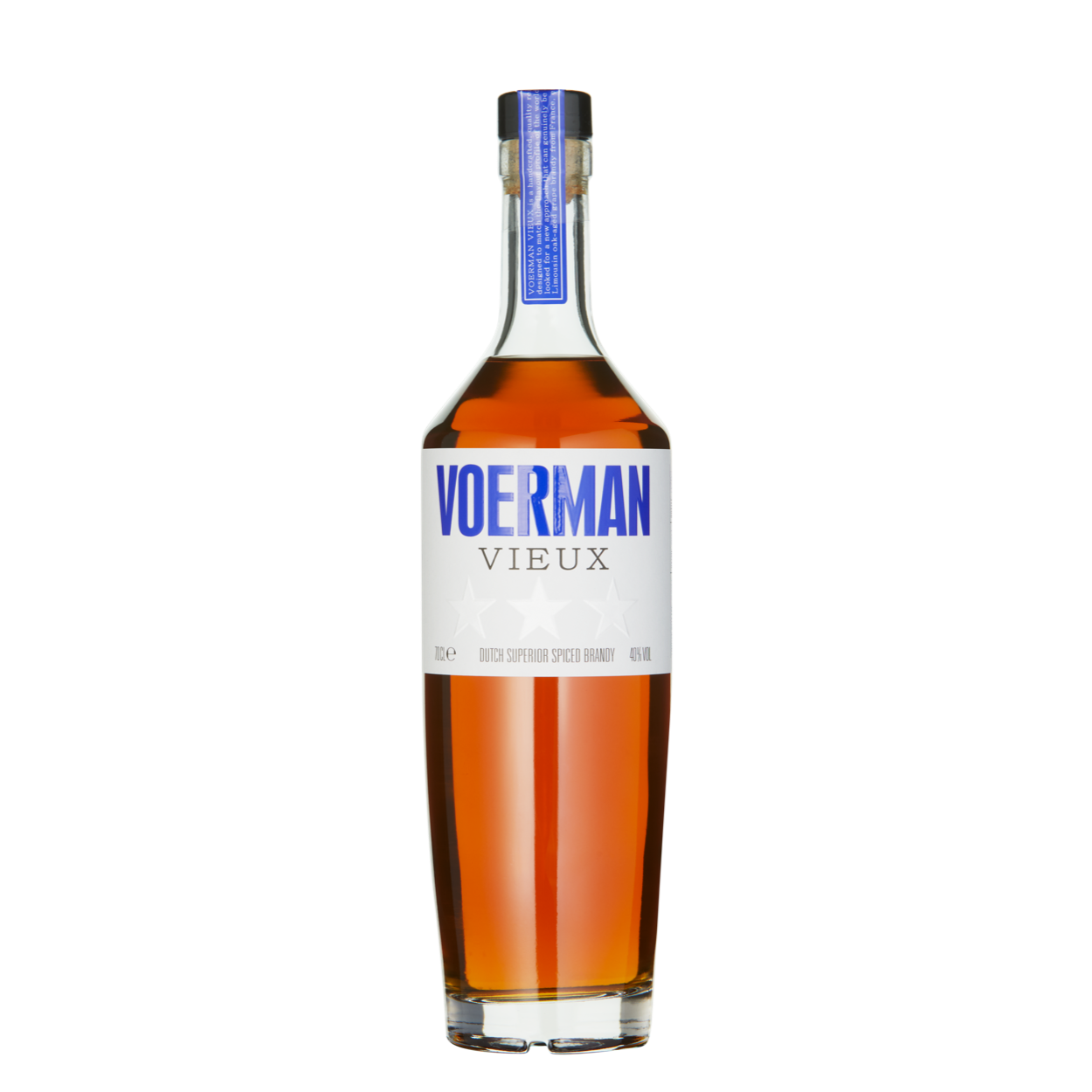Vieux is French for “old”. But, as the nickname “Dutch Cognac” suggests, it is a Dutch product, rather than French. Vieux is an imitation of French cognacs, from flavour, to design as Vieux bottles also mimic other aspects of cognac, such as the 3 stars on the bottle. The 3 stars on a cognac bottle refer to the ageing of the product. If you see 3 stars, it means that it is a VS Cognac so the youngest liquid in the blend is 2 years old, and so the Vieux producers did it to insinuate a certain quality.
But, Vieux did not exactly start off as a quality spirit, and it used to be sold as cognac.
In fact, this cognac imitation came into existence in the beginning of the 19th century, by cutting actual cognac with muscat wine. This made the mixture cheaper and therefore affordable for people from different layers of society. In the late 19th century, the recipe of Vieux switched to a neutral alcohol (usually sugar beet based as sugar beets are relatively cheap) colouring to mimic the cognac colour, sweetener such as sugar beet sugar and something called “cognac essence”. This was a commercially produced artificial flavouring that was meant to mimic the flavour of cognac, while the product was not made from grapes and did not undergo any ageing process. Sometimes they would include a little bit of real cognac to get as close as possible to the real cognac flavour.
At this point, this concoction was sometimes sold for a lot more than it was worth, pretending to be actual cognac. That rubbed the French the wrong way, and they fought to get their cognacs protected as they probably lost a lot of money due to “illicit” cognac sales. However it took them until the 20th century before they could finally breathe. In 1949 they managed to get the Dutch Government to honour the French AOC (Appellation D’Origine Controlee) regarding cognac. This meant that from now on, to be called cognac, you would have to produce according to the rules the French government made for cognac, amongst but not limited to: only using certain grapes for the base, a minimum ageing of 2 years, and most importantly: only being made in the Cognac.
So, that was the end of “Dutch Cognac” then? Luckily, the Dutch are more resilient than that. In 1961 they simply renamed their product to “Vieux” to still have that French association, kept the stars on the bottles and often chose French sounding names for their brands.
The rules for this brandy subcategory are simple: An alcohol base flavoured with extracts, coloured with karamel and a maximum of 20 grams sugar per litre, and an ABV of 35% minimum.
Did the name change affect Vieux negatively? Not at first. In fact, sales of Vieux skyrocketed, tripling the consumption in the first 5 years, being the second best selling spirit in the Netherlands, surpassed only by Jenever. But soon both these spirits would decline, as they did not bother to update their products and focus on higher quality, when the drinking behaviour of the average consumer was changing. This meant that Vieux was diminished to the bottom shelves at the spirit stores where cheap, badly produced spirits inevitably end up.
The recent call for more local products could be a change for Vieux (at least here in the Netherlands) to celebrate a comeback. At least one brand emerged as a premium Vieux, using high quality ingredients taking care to craft a quality product better suited to fit the mindful drinker of the modern landscape. Next cognac based cocktail you’re making, consider swapping out your cognac for a premium Vieux!


